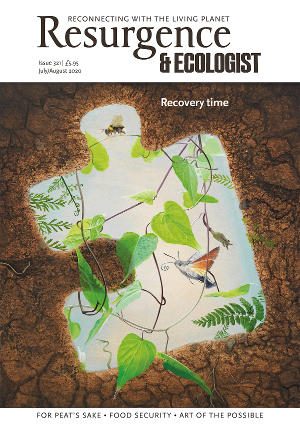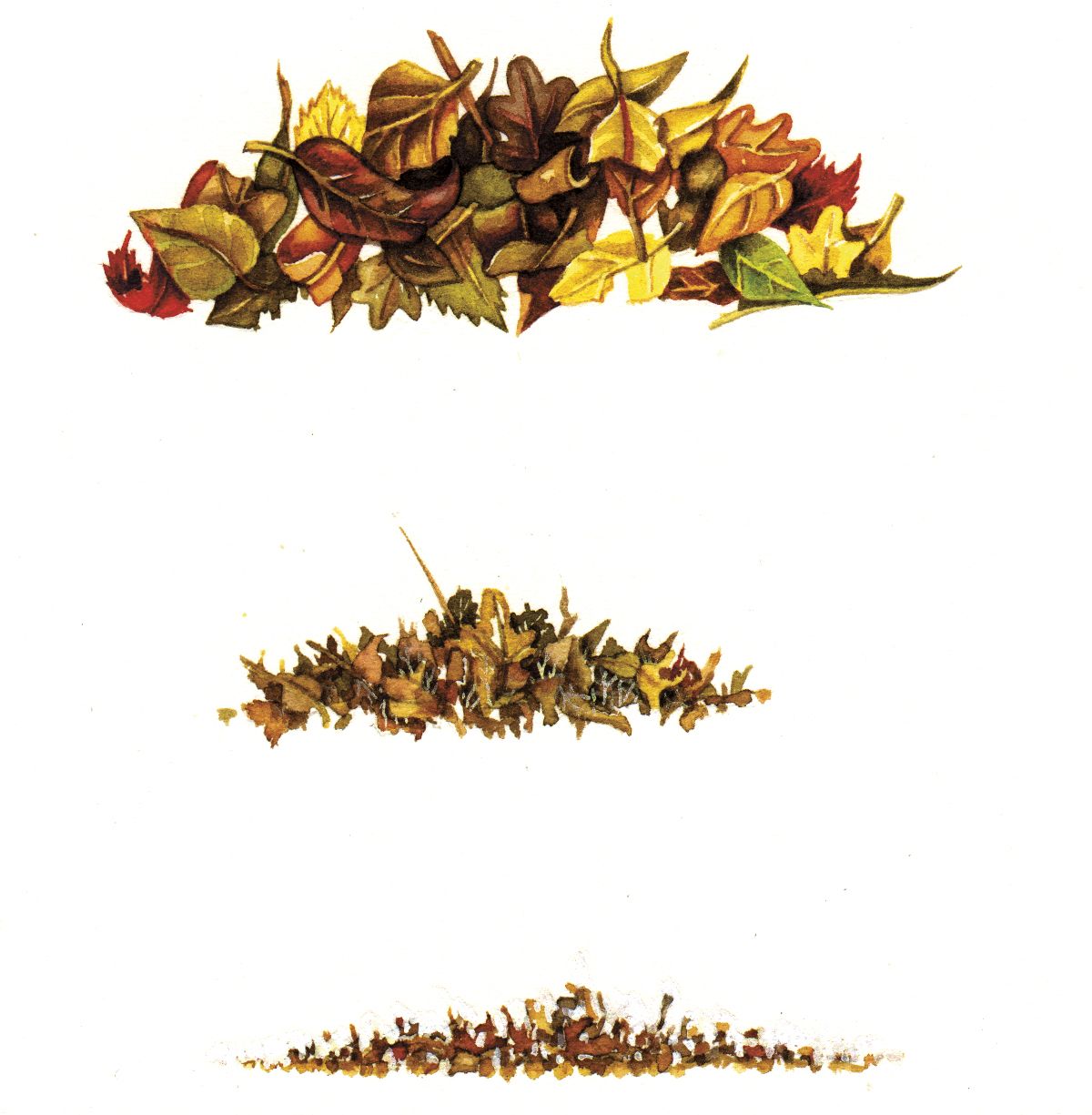The use of peat in horticulture is a surprisingly recent trend. All my old books from the thirties and forties – I’m a self-confessed second-hand-book addict and all compost-related books are real treasures to me – are very much about how to make and use resources we, as gardeners, need. Not so today. We have moved from a siege mentality during the second world war, when we had to make do, to being accustomed to getting anything we want, from any part of the planet, due to the rise of transnational corporations. We are accustomed to everything being easy and almost instantly available. It is undeniable that peat is incredibly useful for gardeners and growers, as we also like to grow our seedlings in modules and plant them out. It feels like we are back in this siege mentality with Covid-19 raging as I write.
Each year we buy 2.9 million cubic metres of peat in composts. I see, during the current lockdown, that gardeners are desperate to get hold of potting compost, as they have no idea what to do without it. I find it incredibly sad that so many people can no longer make their own composts and growing media. It’s not only ridiculously easy, but also deeply satisfying. We have been urged to stop buying peat-based composts for decades now by environmental groups and gardening organisations, but still most of the bagged-up composts contain varying percentages of peat. I’m sure if more people realised that peat is only laid down at a rate of 1mm a year, that a peat bog can take 10,000 years to create and can be wiped out in a very short space of time, that peat bogs are unique wild habitats for all kinds of rare species, and that they sequester more carbon than woodlands, that might help them change their habits. Although we have been using peat for generations, as long as it was hand cut in the traditional way the damage to the peat bogs was minimal. However, it is now mined on an industrial scale, using massive machines. Horticultural use was virtually non-existent before the advent of the machinery, but very quickly it became standard and changed the way growers operated. The very unfortunate side effects of this have been a massive increase in greenhouse gases through releasing all that sequestered carbon, the destruction of unique habitats, and the move to source peat from the Baltic states as well as Ireland, and beyond.
Old gardening books talk about carefully preparing the soil to sow seeds, whereas nowadays seeds are most often started off in plastic modules, using compost containing peat. I believe most of this practice has come from commercial growers, who have taken to growing pretty much everything in modules, and their techniques have been adopted by amateur gardeners. When starting this article, I rang an organic grower friend and asked him what composts are used in the industry. He told me I was opening up a real can of worms. Most organic growers in the UK import their composts from a company in Germany, and even that is not totally peat-free. It is vital for growers to have consistent results, as their livelihoods are at stake and peat has become seemingly indispensable. The UK still has quite a way to go in developing its own peat-free composts. There are some great ones out there, though, using bracken, wood chips, sheep’s wool, and peat taken from filters at reservoirs. One visionary grower, Iain Tolhurst, has developed composts from wood chips and had them tested, and the work and research show that we can make perfectly good, endlessly renewable alternatives to finite peat-based composts.
But we need the industry to grasp the nettle and for the government to ban all peat extraction.
We also need to make a return to direct sowing for all but a very few crops. Even tender plants like squashes, which are very frost-sensitive, can be direct sown in early June where I live on Dartmoor, and will soon romp away, whereas module-sown ones will often have their growth checked and are likely to get attacked by slugs, even when carefully hardened off and protected with cloches. Sowing various crops in a greenhouse, in trays or modules, can certainly help extend the growing season, but I sometimes wonder how much is gained against all the extra work and attention needed, especially for watering and pricking out the seedlings, when compared to direct sowings.
So, stop and think before you sow! Does it need to be in valuable compost? Or can it go straight into the soil at the appropriate time?
This pandemic has made us all reassess so much about our lives, and many people have asked me where they can get compost (mostly the peat-in-a-bag sort), rather than asking how they can make their own.
When I was training in horticulture it was common to make up potting composts, mostly from materials we had to hand. Leaf mould behaves very much like peat in the potting mix, and it’s simple to make, too: just collect up leaves and corral them in some kind of container for a year or two and let the fungi and worms break them down into a wonderful dark humus. Use loam, created by stacking turf and leaving it covered for 12 months; it will need sterilising with heat to kill off seeds, so that you have only the seeds you want germinating in the finished mix. We also add our own homemade compost. Sharp sand is included to facilitate drainage and air flow; it’s cheap to buy and sometimes you can find it for free. All the ingredients are sieved and mixed together in various proportions according to need.
It’s not rocket science, but it is slow and mindful gardening, thinking at least a year ahead and planning accordingly. Most of the old books on potting mixes have all kinds of additive like blood, fish and bone, or chemicals like superphosphate. However, I make my own (smell-free) Russian comfrey concentrate – just fill a barrel that has a hole in the bottom with freshly cut leaves, tamp them down, and catch the resulting concentrate in a bucket – and I mostly use that, watered down, to help feed seedlings.
Think before you buy, and make your own!
DIY compost
Seed mix: One third loam, one third leaf mould, and one third sand.
Potting mix: One third loam, one third compost, and one third sand.
For cuttings: A 50:50 mix of leaf mould and sand.








